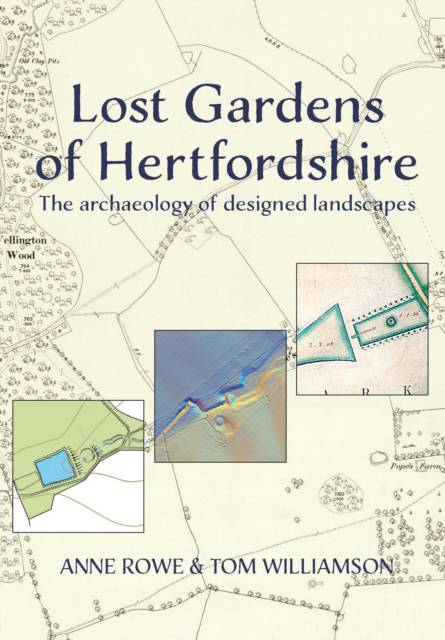
- Afhalen na 1 uur in een winkel met voorraad
- Gratis thuislevering in België vanaf € 30
- Ruim aanbod met 7 miljoen producten
- Afhalen na 1 uur in een winkel met voorraad
- Gratis thuislevering in België vanaf € 30
- Ruim aanbod met 7 miljoen producten
Zoeken
Lost Gardens of Hertfordshire
The Archaeology of Designed Landscapes
Anne Rowe, Tom Williamson
Paperback | Engels
€ 32,95
+ 65 punten
Omschrijving
Archaeology can transform our knowledge of the history of gardens and designed landscapes. Terraces, viewing mounts, pools and other features of the great gardens laid out around elite residences at various times in the past can leave impressive earthwork traces; long-lost walls and garden buildings may be revealed by aerial photography or remote sensing techniques such as Lidar. Landscape parks, moreover, often contain the fossilised traces of the working countryside that was swept away when they were created, providing important information about the ' genius of the place' which was consulted when they were first designed. Hertfordshire is particularly rich in such remains. Proximity to London ensured, from an early date, an active land market and a rapid turn-over of properties: where estates were amalgamated with neighbours and mansions demolished, traces of their gardens were often preserved under grass or woodland. And the county's moderately undulating terrain provided opportunities for - in some cases necessitated - large schemes of earth movement to provide level areas for lawns and parterres, or to create terraces. In this fascinating and innovative study - the outcome of several decades of research - systematic field survey and the analysis of aerial photographs and Lidar images are combined with the evidence of early maps and documents to reconstruct the appearance and history of more than twenty of Hertfordshire's ' lost gardens' . An archaeological approach also allows us to see garden history in new ways, revealing aspects of design and patterns of development not readily apparent in the kinds of evidence conventionally employed by garden historians. Clearly and accessibly written, and richly illustrated with a wealth of archaeological plans, aerial photographs, archive maps and early engravings and paintings, this book will be essential reading for all those interested in Hertfordshire's archaeology and garden history, as well as for students of garden and landscape history more generally.
Specificaties
Betrokkenen
- Auteur(s):
- Uitgeverij:
Inhoud
- Aantal bladzijden:
- 288
- Taal:
- Engels
Eigenschappen
- Productcode (EAN):
- 9781912260751
- Verschijningsdatum:
- 1/03/2026
- Uitvoering:
- Paperback
- Formaat:
- Trade paperback (VS)
- Afmetingen:
- 171 mm x 248 mm

Alleen bij Standaard Boekhandel
+ 65 punten op je klantenkaart van Standaard Boekhandel
Beoordelingen
We publiceren alleen reviews die voldoen aan de voorwaarden voor reviews. Bekijk onze voorwaarden voor reviews.








